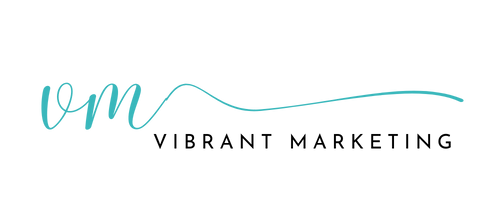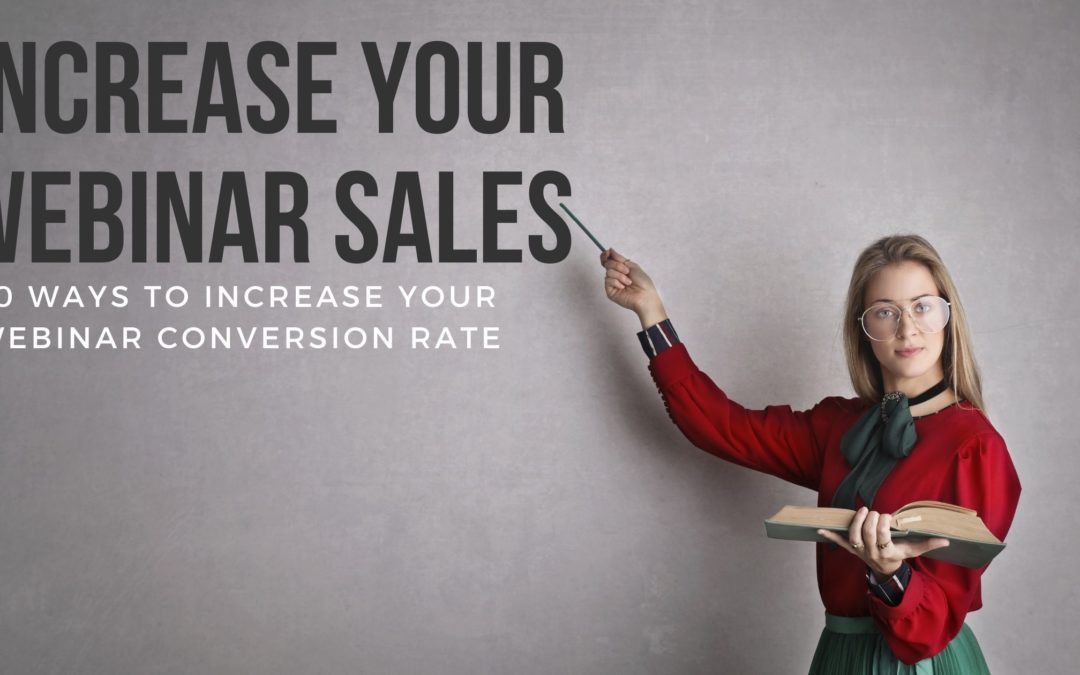How to improve your sales conversion rate.
If you are launching or selling services via webinars, masterclasses or workshops then this is for you. Here are 10 tips that will help you increase your conversion rate for your webinars and in turn increase your sales revenue.

1. You are Teaching Too Much
You want to make sure that you’re teaching people what is possible and not much of the “how-to”, because if there’s so much of the, “how-to” content you’re going to overwhelm people and give them so much to do that they actually have too much to deal with after attending your masterclass or webinar that they’re not actually ready to buy.
When you teach too much, people who attend feel that they need to go off and do the work on what they learned before they can actually start seeing results.

2. Wait Until the End to Sell
You wait until the end to sell or mention your product/service. Do not make this mistake. You want to let people know that there is something coming down the pipeline. By the 20 minute mark, you should have mentioned your program, your membership, or your product/service. You can just drop it in very casually and say, I’ll let you know more about that later in the presentation.

3. Look Out For Trends
Review your webinar data. You want to see where people are dropping off because if people drop off your webinar, they’ve not heard the sales message and they are probably not going to come back. You want to look out for trends and dips, where you see people viewing your webinar. See where there are steady views and where they drop off.
Next, you want to look at what is causing the drop-off, make amendments to your presentation and then try it again.

4. How Long Is Your Webinar?
You want to ensure that your webinar’s not too long. People are busy and they have allotted 60 minutes to attend your workshop. They’re not going to stay around for 90 minutes to two hours if they don’t have to.
I would suggest that you have your teaching end around the 40-50 minute mark. By 50 minutes you are answering people’s questions, getting to see why are they on the fence and helping them make the decision towards a purchase or not purchasing depending on their situation.
People will always stay later especially your tribe (your hot audience) and the people who have the time or just really want to stay around, but most people are busy and they have set aside 1 hour for you. Make sure you have everything that people need to know to make an informed decision by the 60 minutes.

5. Live Or Evergreen Webinar?
You want to make sure you teach your webinar live until it’s optimized and you know your webinars are performing really well. Most people rush to evergreen when there’s so much more money left on the table. If you’re not killing it on all fronts when it’s live, what’s going to happen when it’s evergreen?
Going evergreen too fast will mean crickets, you’re not going to see the results you want and make wrong decisions based on the data. Teach your webinar multiple times until you have it down to a fine art and then go evergreen.

6. Talk About the Objections
You want to talk about the objections. There are a variety of objections that people may have. They could be time, money, are you the right person to help them?
If you are not addressing the cost. Regardless if it’s $197 or it’s $1997, or more, if you’re not talking about the cost, and addressing the issue they will stay on that fence and not take the leap to make the purchase.
Ensure you are asking people “what is stopping you, what’s holding you back from taking action and signing up?”. Why aren’t they buying the program? Why are they on the fence on how can you help get them off the fence?
Not everybody is right for the program, but if you don’t answer people’s questions, you’re not going to make the sales.

7. What Is The Risk?
What is the risk of not purchasing your product or service? If they don’t take action they run the risk of staying stuck, not achieving the desired outcome, where are they currently and where they want to be.
Address the risk of not taking action, they are attending your webinar because they have the issue and there is a cost associated with not taking action so ensure you address it.

8. What Is Their Biggest Struggle?
You don’t want to wait until you get on a webinar to actually find out what their biggest struggles are. When somebody is signing up, ask them the question, why are they turning up? You can use messenger bots or email to ask people in advance.
You need to make sure you’re not waiting for the webinar to find out the answer to this question because if you do that people may not hang around for you to address their issue.
Create a list of struggles and keep adding to the list because just because you know, the initial pain points into why somebody is turning up, if you don’t know what their biggest struggle is at this moment in time, you won’t be able to address it. And you’re going to leave money on the table.

9. Post-Webinar Survey
One of the biggest overlooked parts of actually hosting a webinar is sending out your post-webinar survey. You want to make sure why someone didn’t purchase and what they thought of the webinar. Was there something that should have been included? Is there anything that was really good? Just ask for open feedback, keep it short and simple.
Even one question asking somebody why they didn’t buy is enough to help you make your next webinar.

10. Craft Your Sales Pitch
If you’re doing webinars and you’re not seeing the standard conversion rate or you’re not seeing any improvements in your conversion rate, you really need to work on crafting your sales pitch.
Whether this is practicing your pitch, trying new things, or even seeking the help of an expert. Perfecting and executing your sales pitch will help increase sales.
Increasing your sales conversion rate by as little as a half or a percentage point will see a huge increase to your bottom line.

